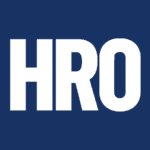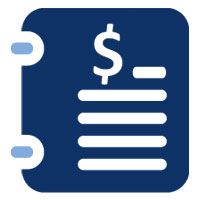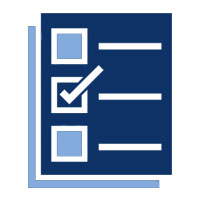When it comes to protecting your company's property, whether it is your facilities, equipment, or goods- in-transit, three considerations are paramount:
- Current insurance coverage and property valuations
- Consistent coverage, without gaps or overlap in protection
- A carrier with exemplary market commitment and financial strength
Our professionals are highly attuned to the property protection needs of emerging growth firms and the state of the property insurance market. Through one point of contact, you can access coverage for virtually any property exposure you face and easily assemble the appropriate coverage to suit' your needs, be they simple or highly complex. Additionally, we will help you easily adapt programs to meet your evolving requirements while being sensitive to your budget and cash flow.
Learn More About Commercial Property Coverage
Commercial General Liability policies are the most common business liability policies. As the name implies, these policies cover "general" liability. More specific types of liability such as automobile liability, technology errors and omissions or professional malpractice liability are covered under specialized liability policies.
General Liability policies generally cover the legal liability of a company for bodily injury to others and for damage to the property of others. There are several different policy forms. Some are limited to a business's liability as owner (or occupant) of your premises. Others offer broader coverage.
Learn More About Commercial General Liability Coverage
Virtually every business needs to have some form of product liability insurance because every business is responsible for its products and services. So regardless of whether you manufacture products, or provide some type of service, you need liability insurance to protect you from third party claims for property damage.
Property Damage Liability provides protection for you if a third party's property is damaged as a result of using one of your products, or if your business or one of your employees is responsible for that damage.
Learn More About Products Liability
Use Products Liability Insurance to Protect Your Organization
Workers' Compensation Insurance provides coverage for work-related injuries or illnesses. If one of your employees is accidentally injured while on the job, benefits determined by state law will be paid for a wide range of services to aid the injured worker's recovery and return to work. Employer's Liability coverage is also included and covers suits brought against the employer by the employee for job-related accidents. Workers Compensation laws often limit the liability of employers to employee suits, but suits are still possible.
Coverage Highlights can include:
Workers' Compensation insurance includes two basic coverages:
- The first coverage provides benefits for employees injured on the job. State law determines these benefits.
- The second coverage is Employer's Liability. This section covers suits by employees against their employers for job related accidents. Suits can also come from family members of employees. Workers' Compensation laws often limit the liability of employers to employee suits, but suits are still possible.
Learn More About Worker’s Compensation Coverage
Learn How to Control Your Worker’s Compensation Cost
This type of errors and omissions coverage protects directors and officers against claims for losses resulting from failure to do their jobs properly. Claimants can include competitors, suppliers, customers, employees, investors/shareholders of the company, and government agencies.
As a private or public company, securing Director’s and Officer’s Liability to protect your board members is key to attracting and retaining board members.
Private companies face significant exposure to litigation brought by parties other than security holders. In fact, plaintiffs other than security holders brought the bulk of claims filed. Any company that employs one or more individuals or deals with customers, clients, competitors, the government, or other third parties has a D&O exposure. In addition, private companies planning for rounds of financing, IPO or a private offering of debt or equity in the next 36 months should consider purchasing D&O insurance.
Coverage Highlights could include:
- Covers CLAIMS MADE against Directors & Officers within the policy period (vs. occurrence)
- The contract could be an indemnification contract or a duty to defend contract.
- Directors & Officers are covered for acting within their scope and capacity as Directors and Officers of their company or a subsidiary.
Learn More About Unique Liability Risks for Private Companies
Learn more About D&O Exposures
EPLI is Liability Insurance to help protect your business when there is an allegation stemming from discrimination, harassment or another type of wrongful occurrence in the course of employment that is in violation of federal, state or local law, common or statutory.
As an employer, you are at risk from the people you hire and even the people you decide not to hire. Thanks to a proliferation of federal, state, and local employment laws, your company could be vulnerable to costly litigation.
In addition, mergers and acquisitions are often accompanied by employment terminations and changes in reporting relationships. Such upheaval often spawns numerous lawsuits. In addition, day-to-day
human resource practices such as the promotion, discipline, and termination of employees also lead to litigation.
Highlights of Coverage could include:
Coverage is provided for claims brought by employees or applicants, or by regulatory bodies on their behalf, against:
- The corporation and its subsidiaries.
- Directors and Officers.
- Employees; and
- Occasionally coverage is provided for third party claims (i.e. by clients, customers, vendors, etc.)
Typical coverages under Employment Practices Liability Contracts includes:
- wrongful dismissal, discharge, or termination of employment, either actual or constructive.
- harassment (including but not limited to sexual harassment).
- discrimination.
- retaliation.
- employment-related misrepresentation.
- employment-related libel, slander, humiliation, defamation, or invasion of privacy.
- wrongful failure to employ or promote.
- wrongful deprivation of career opportunity, wrongful demotion, or negligent employee evaluation.
- wrongful discipline.
- failure to grant tenure; or
- with respect to any of the foregoing: negligent hiring, retention, training or supervision, infliction of emotional distress, failure to provide or enforce adequate or consistent corporate policies
Learn More About Employment Practices Liability (ELP)
Use EPL Insurance to Protect Your Organization
Technology Errors & Omissions can be defined as coverage for claims alleging negligence in the provision of technology services or due to the failure of technology products. From time to time these products may be endorsed to cover intellectual property, media liability and/or Internet services. The products in the marketplace vary and the scope of exposures differs in each organization.
As technology companies continue to emerge, generalizing trends in Technology E&O coverage has become more difficult, and elements of E&O coverage have become more complex and specialized.
In addition, the value of the assets continues to grow while organizations increasingly depend on technological systems and efficiencies to protect and leverage information. In this business environment, it is critical to protect against technological systems' errors or omissions that can create widespread damage or disruption to information assets and severely harm balance sheets.
Our insurance specialists understand that as a central element of your insurance program, Technology E&O must be structured to provide comprehensive coverage for economic loss caused by mistakes or the negligent provision of products and services. Our team members will help you identify your specific exposures and structure a cost effective, customized insurance program solution, which includes the appropriate type and limits of E&O insurance.
Learn More About Technology Errors and Omissions Coverage
Learn more About Professional Errors and Omissions Coverage
Learn more About Manufacturing Errors and Omissions Coverage
Cyber Liability Insurance protects your company for breach of security in relation to denial of service, unauthorized access, and theft of data arising from hacker attacks or a computer virus. This includes inadvertent transmission of a virus or other malicious code and breach of confidence or misuse of information, which is confidential or restricted.
HRO offers comprehensive coverage against first party damage to your electronic data held on your computer systems (including your web site) and also third party claims including content sent in an e-mail message or held on your company's web site.
Learn More About Cyber Liability Coverage
Use Cyber Liability to Protect Your Organization
Transit Marine Insurance is a group of property insurance coverages designed to insure exposures that cannot be conveniently or reasonably confined to a fixed location or insured at a standard rate under a standard form. Coverage can include properly in transit over land, certain moveable properly, properly under construction, instrumentalities of transportation and communication (such as bridges, roads, piers and telecommunications towers), legal liability coverage for bailees, and computerized equipment.)
Learn More About Inland Marine Coverage
Learn More About Motor Truck Cargo Coverage
Product Recall insurance is an important part of protection for CPG companies. If your company designs manufactures, distributes, or sells a physical product, this is an important coverage. A Product Recall insurance policy can help you with the costs of getting a defective product back and under the control of the manufacturer. Coverage forms and programs will vary. To learn more about the solutions and services we provide for Product Recall coverage, please schedule a call with us.
Learn More About Product Recall Coverage
The letter of intent has been signed, both buyer and seller take their seats at the bargaining table and the negotiations begin. They muddle through the Purchase & Sales agreement only to be caught up in the indemnification provisions. The buyer wants financial recourse against the seller if these statements are not accurate and the buyer sustains a loss. This illustrates the possible need for Transaction Liability/Reps & Warranties Insurance.
Features of a Reps and Warranties Policy could include:
- Either the Buyer or the Seller may be the insured party.
- Policy terms mirror the applicable survival period of the reps and warranties.
- Policies may be written to cover all the reps 9nd warranties, or a subset thereof.
- Policies may be "excess" of an escrow amount or other self-insured retention, or may sometimes replace the escrow altogether.
- Insurers are willing to insure most customary reps and warranties.
Learn More About Rep and Warranty Coverage
Learn More About Managing Hidden Risks During a Merger or Acquisition
Intellectual Property is a key asset for a growing company. Intellectual Property consists of patents, copyrights, trademarks, trade secrets and trade dress. Some of these assets can be protected with insurance contracts, for example:
Patent Infringement may cover unauthorized manufacture, use or sale of an invention protected by a patent. For example: machinery, equipment, tools, toys, products, processes, drugs, or software.
Copyright Infringement may cover unauthorized use of original work or copyrighted medium. For example: software, books, music, songs, or poems
Trade Secret Theft/Infringement may cover improper use or disclosure of information that provides or would have provided a business with a competitive advantage. For example: formulas, processes, techniques, and strategies.
Trademark/Trade Dress Infringement may cover unauthorized use of a mark or trade dress. For example: Symbols, Slogans, Expressions, or packaging.
Learn more About Intellectual Property Coverage







